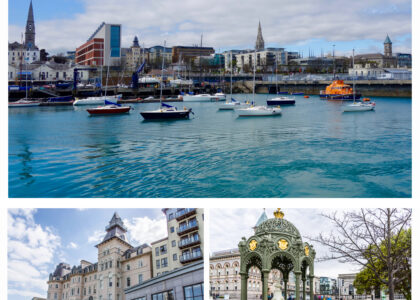Welcome to The Legacy of Tara Hill, a place steeped in history and legend, where past and present converge in fascinating tales of ancient kings and mythical battles. Nestled in the serene landscapes of County Wexford, Ireland, Tara Hill is not just a geographical feature; it is a symbol of Ireland’s rich cultural tapestry and storied past.
The story of Tara Hill begins in the mists of time, with its origins dating back to the Neolithic period. Archaeological evidence suggests that Tara Hill was a site of human activity as far back as 4,000 BC. Its strategic significance and natural beauty made it a focal point for settlement and worship throughout the ages. The hill is perhaps most famously associated with the High Kings of Ireland, serving as a ceremonial and possibly a political seat of power during the early centuries AD.
According to legend, Tara was the dwelling place of the gods and the center of the kingdom of Éire. As the site where the ancient Irish kings were crowned, it was believed to be the spiritual heart of Ireland. The Hill of Tara was where King Cormac mac Airt, one of the most renowned High Kings, held court in the 3rd century AD. His reign is considered a golden age of Irish history, characterized by prosperity and cultural flourishing.
One of the most intriguing tales associated with Tara Hill is that of the Lia Fáil, or the Stone of Destiny. This ancient stone is said to have the magical ability to roar when touched by the true king of Ireland. Although the original stone is thought to have been moved to Scotland, its legend still echoes through the annals of Irish folklore.
Over centuries, Tara Hill witnessed the ebb and flow of power, including the arrival of Christianity in Ireland. In the 5th century AD, St. Patrick, the patron saint of Ireland, is said to have visited Tara and converted the local king to Christianity, marking a pivotal moment in Irish religious history.
Throughout the medieval period, Tara remained a symbol of Irish sovereignty, but as history moved forward, its political significance waned. By the 12th century, the hill had lost its status as the seat of the High Kings, but its cultural and historical importance endured.
In the 19th century, Tara Hill found itself at the heart of a revival of interest in Irish history and culture. The site became a symbol of national identity and pride for the burgeoning Irish nationalist movement. This resurgence of interest helped preserve the site and its stories for future generations.
Today, Tara Hill stands as a testament to Ireland’s layered history. Visitors come from all over the world to walk its ancient paths, explore its archaeological wonders, and connect with the legends that have shaped Irish identity. It remains a place of pilgrimage, reflection, and inspiration, embodying the enduring spirit of Ireland.
As you stand here, atop Tara Hill, imagine the voices of the past echoing through the ages. From the chants of ancient druids to the speeches of legendary kings, Tara is more than just a hill; it is a living chronicle of Irish history, waiting to be discovered by those who seek its secrets.






